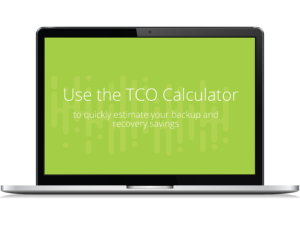In an effort to improve ROI, agility, and key performance metrics, organizations are increasingly cognizant of IT infrastructure costs. The benefits of lowering Total Cost of Ownership (TCO) of enterprise infrastructure goes beyond solely cost savings, as tackling cost challenges often involves eliminating silos and inefficiencies associated with traditional infrastructure. The result: A ripple effect of value creation.
Market solutions that offer a low TCO as the principal benefit also enable:
- Faster deployment
- Reduction in administration time
- Greater operational agility
- Enhanced scalability and flexibility
- Streamlined management and the elimination of silos
Perhaps the most important byproduct of TCO reduction in IT organizations is a fundamental shift in the day-to-day activities of administrators, in addition to a new industry playbook.
The very features that facilitate a reduction in capital expenditure, as well as operating costs, also reduce infrastructure administration time. Administrators and IT operations spend less time dealing with downtime and its fallout, along with fewer hours spent on triaging and tackling administration issues. Simpler and automatic backups, comprehensive web management tools, and turnkey solutions for a plethora of domains reduce the need for granular infrastructure management.
A Changing Playbook
The result of these features and their subsequent benefits is a shift in the role of infrastructure management. As new infrastructure solutions do the heavy lifting and consolidate the management of compute, storage, data backup, and data recovery, you can focus on impactful, overarching KPIs in contrast to granular, bit-level metrics.
An IT director of enterprise platform engineering at a healthcare company echoes this shift across IT organizations: “Now, I can stop focusing on compatibility matrixes, storage operating systems, and drivers, and focus on finding the true value we can add to the overall business model.”
The Byproducts of TCO Reduction
Organizations across the board are seeing the ripple effect of incorporating modern data management solutions and reaping the byproducts of reducing their TCO. Alongside a reduction in silos, the role of IT has moved from fostering micro-level oversight into a more strategic function. With more time gained from not being required to deal with the issues of traditional infrastructure, companies are mapping and implementing long-term value-oriented projects.
Cohesity Lowers Infrastructure TCO
Some teams are pursuing greater energy efficiency goals, reaching new frontiers in power usage effectiveness. Other organizations are able to strengthen business intelligence applications, spending greater time leveraging data, rather than managing it. With modern data management solutions such as Cohesity, teams can focus on continuous optimization, strengthening financial metrics and value for stakeholders across the board.
Reducing your total cost of ownership has benefits that extend beyond reducing capital and operating expenses. Modern data management solutions eliminate silos, management complexity, and provide greater value for your organization and your customers. Find out how much you can save—and gain—by reducing your TCO.



















